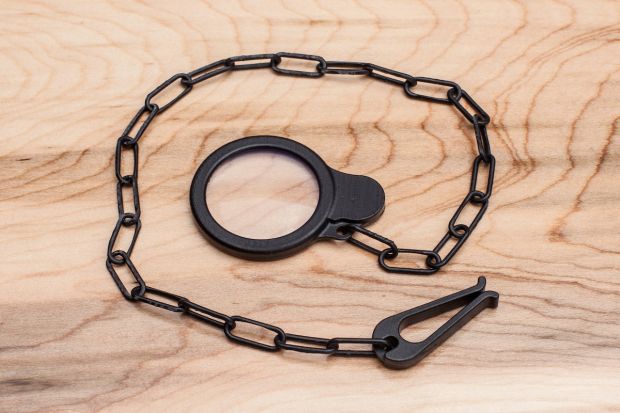There are several 3D printing technologies in the world, and most of them can handle multiple different materials, although they do need to be of the same overall category, for the most part. Glass has mostly stayed outside their reach though.
Glass is a very impressive thing. Hard to find in nature, it is basically sand that has been melted and burned in such ways that it gained a crystallized form that allows light to pass through. That's one description anyway.
Glass is used for everything from windows and tiny displays and visors to baubles and full-fledged statues. Glassblowing is a special type of art that, while not altogether healthy, does produce some really striking objects.
Today, though, we're not going to talk about that. Instead, we'll show you something that totally bypasses the reliance on glass entirely.
The 3D printed magnifying lenses from Formlabs
An engineer at Formlabs named Craig Broady had a thought not overly long ago: how could he make it possible to 3D print a lens using a normal 3D printer?
The answer was found in the company’s Clear Resin, which enabled him to create a monocle clear magnifying lens on the Form1+ SLA 3D Printer.
Sure, it's not FDM (fused deposition modeling), but it's not like an extruder that created items one drop of plastic at a time could ever make a lens of any kind. Not only does it have material restrictions (plastic can't be turned into a lens) but it lacks the necessary resolution and precision.
SLA, stereolithography, cures resin by bombarding it with ultraviolet light. It makes for some very accurate objects, hence the successful creation of the lens in the gallery. According to the Formlabs engineer, the Form1+ can create layers with a thickness of just 25 microns (in addition to 50 and 100), so it can be very precise. Broady even got away with using 50 micron layers.
The lens measures 1.75 mm at its thinnest point and 4.32 mm at its thickest. It doesn't even distort the object being magnified if you can believe it. No more than any regular magnifying glass anyhow.
The process
It took about 3 hours to make one lens, including the attached support material. The clarity wasn't the best, but the engineer used some sandpaper to smooth it out, remove the coarseness. For those who know what it means, the quotient went from 220 grit to 2,000 in 400 grit increments.
Novus 3 heavy scratch remover followed, then Novus 2 fine scratch remover applied via cork. Novus 1 was the final step, whereby the lens was subbed with a soft cotton cloth. All these steps were applied to both sides of the lens.

 14 DAY TRIAL //
14 DAY TRIAL // 

